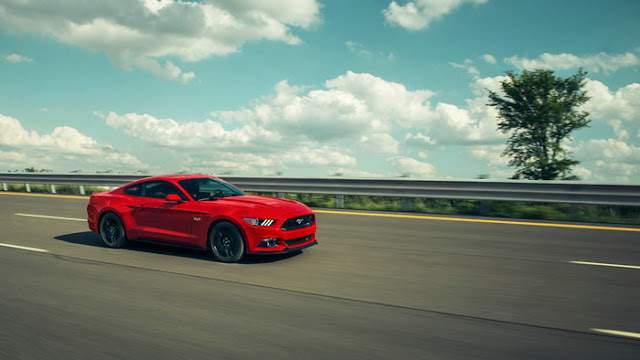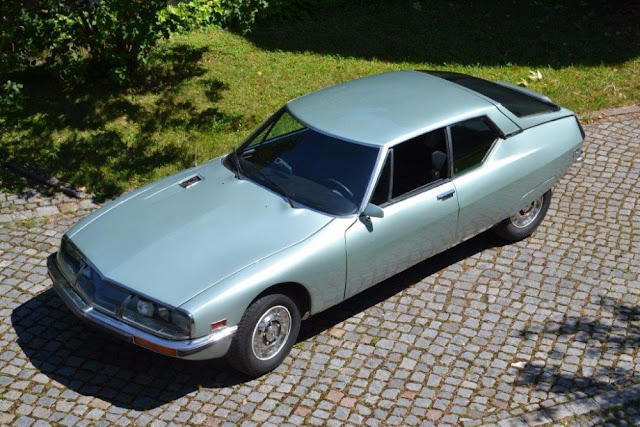Customers are what's holding Porsche back
 |
| Photo: Porsche |
Today there are precisely two brands selling cars with rear-engines. Smart and Porsche.
For Smart, the reason for putting the power-train in the back is practical. There's more space in the back since the rear-wheels don't need to be steered. That is also why it's rear-wheel drive, meaning the engine presses the driven wheels to the road, increasing acceleration for when you really need to get that parking spot first.
For the Porsche 911 the reasons are in fact also practical.
Space is key. When the first 911 was designed, Ferdinand Porsche knew exactly what he was doing. Adolf Rosenberger, racing driver from the 1920s and chief designer at Porsche, convinced him long ago that the mid-engine layout is the way to go, with the fuel tank between engine and cabin. That way, the weight-distribution stays the same at all times.
Because while you wouldn't notice any difference to tne traditional front-engine, rear-wheel drive setup at first, the handling of said cars would worsen with the fuel tank becoming lighter as the race progresses. That is why, from Formula 1 and Le Mans Prototypes to Ferraris and Lamborghinis on the road, you see mid-engine architectures.
The reason why Porsche's put the engine in the back was space. If the engine was right above the rear-axle, there would be no space for a rear bench. So the Porsche 911 was supposed to be everything but a purebred sports car. Why exactly they didn't just drop the engine in the front, I can't say.
Maybe it was because water-cooling was still somewhat new for the company, with the Porsche 356, the VW Käfer (Bug) and Bus being rear-engined too, meaning Porsche could save developing ressources through using the know-how they had. Rear-engine setups are best suitable for air-cooling because the air behind a moving car is low preassure.
The problem with rear-engined, rear-wheel driven cars is that the rear weighs the world while the front weighs literally nothing. That makes it good for acceleration but also ruins corner stability and stability under breaking, resulting in the heavy back wanting to overtake the front of the car. You get the same kind of snap-oversteer with mid-endined cars, but it's even more extreme with rear-engine setups.
Anyways, that was that, and the world was okay. The 911 was a sporty car with a rear bench for the kids and Porsche would eventually figure out ways to not build a deathtrap. That is, until some hooligan maniacs took it to a rally and found out, that it's incredibly potent, with it's mad acceleration and the balance that a boxer engine brings. Suddenly, the 911 became a phenomenon.
So what do. If Porsche eventually moved the engine to the middle, it would've risked losing customers that bought the 911 for what it was. But with manufacturers like Jaguar attacking the market with fast 2+2s (cars with sporadic rear seating), Porsche couldn't afford not to invest lots of time and money to master the rear-engine concept and making it better and better.
Even if Porsche just launched a different model with a mid-engine layout, it would run at risk of cutting its own flesh through threatening the "911 as a brand". Because the snobby customers, specifically the hardcore 911 ones, insist that the car is supposed to compete with the best from Britain and Italy (and wouldn't buy the 911 anymore if it wasn't Porsches flagship) but they dare Porsche to change any of the 911s characteristics.
The waves purists made were massive, for instance, when the latest 911 (991) introduced electric power-steering. Something that is necessary to keep up with the competition, but made the car look like "a work of the devil", as James May described it. So Porsche can neither make the 911 mid-engined, nor can they launch a mid-engined flagship under a different name.
What happened in 1996 was at the same time surprising and unavoidable. Whether the world was ready or not, Porsche started selling it's first mid-engined sports car, the Boxster. Of course the decision-makers were extreeeeemely cautious with it, not bothering with selling a "potent coupé", but rather a "constrained roadster". And despite the advanced engineering going on inside the car, it had one major problem.
Porsche didn't dare to give it more than 147 bhp, which meant that a Golf GTI would make it eat dust on the Autobahn. And since Germany has the most retarded car scene in the world, people were quick to dismiss it based on the numbers and call it names like "hairdressers car". Nonetheless the press adored the Boxster.
One thing led to another and on the high-selling Boxter followed the coupé version, the Porsche Cayman. As Cayman S and later Cayman R, it taught cars with a higher number of dollars on the price tag, liters of displacement and cylinders a lesson or two on being fast. This happening was a logical but all but granted step from Porsche. And the hearts of non-snobby sports car fans burned hotter and hotter.
Consipiracy theorists were certain; somewhere in Porsche's basement was a mid-engined 911 that would break the laws of physics and literally rip the drivers face off. But it's not allowed to exist, it's forbidden in the world of sports cars and damned to be nothing more than a wet dream as you're being laughed at in your Boxster.
Nineteen long years after the Boxter, it happened. The fire broke loose and destroyed the gates. What we got maybe wasn't a mid-engined 911, but the closest it gets: The Porsche Cayman GT4.
The chassis is nearly entirely based on the 911 GT3, so is the entire steering, the suspension and basically the entire front half. The seats aren't adjustable in order to keep the point of gravity low and are actually derived from the Porsche 918, so is the steering wheel. This time in the right position is no longer a regular Cayman engine but the 385 bhp 3.8 Liter flat six from the 911 Carrera S.
In the hands of MotorTrend, the endresult has beaten everything that crossed its path, from the Corvette C7 Z06 over the Audi R8 V10 up to the Ferrari 458 Italia on Willow Springs - with a stick shift. If Porsche gave it a shorter transmission, so says MotorTrend, it would out accelerate every Porsche but the GT3 and GT2 to 100 kph (60 mph).
Porsche purists still demand the 911 to be build as a rear-engined car to stay true to the original from the 60s. At the same time they didn't see a problem with it ditching the rear seats in the GT3, even though that was the very reason it the engine placed in the back. One can only imagine what'd happen if they put the 500 bhp 4 liter engine from the GT3 RS into a Cayman.
Or even better, if they built a 911 GT3 RS with the with the engine in the middle. The fact that this won't happen is my problem with Porsche and the 911.



Kommentare
Kommentar veröffentlichen